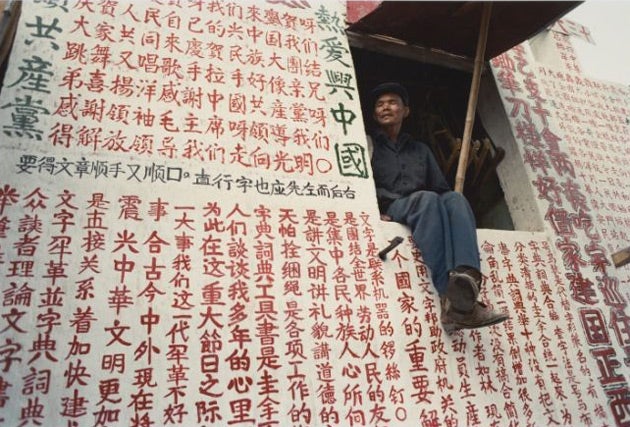China: a photographic portrait, City Art Centre, Edinburgh

Your support helps us to tell the story
Our mission is to deliver unbiased, fact-based reporting that holds power to account and exposes the truth.
Whether $5 or $50, every contribution counts.
Support us to deliver journalism without an agenda.

Louise Thomas
Editor
Child beggars, clam diggers, "cadres sent to villages for re-education purposes", detox clinic members, prisoners practising qigong – all human life is here, vividly captured in this captivating exhibition about China.
There is, however, a conspicuous absence of images of human death in the country that last year executed more people than any other nation; anything to do with the 1989 Tiananmen Square massacre is also out of bounds. But the exhibition, from the Guangdong Museum of Art, cannot fail to intrigue. It is huge: more than 100,000 images by 1,000-plus photographers culled into 600 from 250 snappers, covering the period between 1951 and 2003.
Crowds of people are seemingly on tap for the photographers. In Wang Wenlan's 1991 black-and-white image Cycling to Work, throngs of Shanghai denizens wend their way to work in 12 makeshift lanes – six one way and six the other. People wait in their hundreds in a cage-like structure to board a Shanghai ferry in Wang Tong's 2001 black-and-white photograph. And they form a huge crescent watching a mobile court dispense justice in a mountainous area of Yunnan in Gao Ming's 2003 image. People are everywhere, that is, except for in Li Nan's black-and-white 1990 image of disabled children splayed out on wooden high chairs in a nursing home, above the (surely barbed) caption: "There is a shortage of personnel."
Among the older images is Zhang Zudao's 1957 photograph of the bustling Laifeng wood and coal market in Hubei; another, from 1958, shows female cooks of the impersonal-sounding Production Brigade.
While not overtly political, the exhibition covers controversial issues. One of the most arresting shots is 1999's Dead Fish in a Polluted Pond, in which photographer Hu Weiming points a finger at the human cause of the pollution by having a man looking away from the lens, surrounded by countless dead fish.
Another shows a downcast young woman in a chamber combing her long black hair, surrounded by other figures, mostly facing away from the camera; the caption reads: "Female prisoners hoping to have their death sentence repealed."
But a sense of energy and purposefulness pervades many of the images, among them Xu Peiwu's 1999 shot of workers pulling down "temporary housing" in Guangdong, or Wang Fuchun's 1999 image of a man sleeping in a commercial building in Shanghai, "owned by the investor responsible for tearing his house down".
To 14 September (0131-200 2323)
Subscribe to Independent Premium to bookmark this article
Want to bookmark your favourite articles and stories to read or reference later? Start your Independent Premium subscription today.
Join our commenting forum
Join thought-provoking conversations, follow other Independent readers and see their replies
Comments